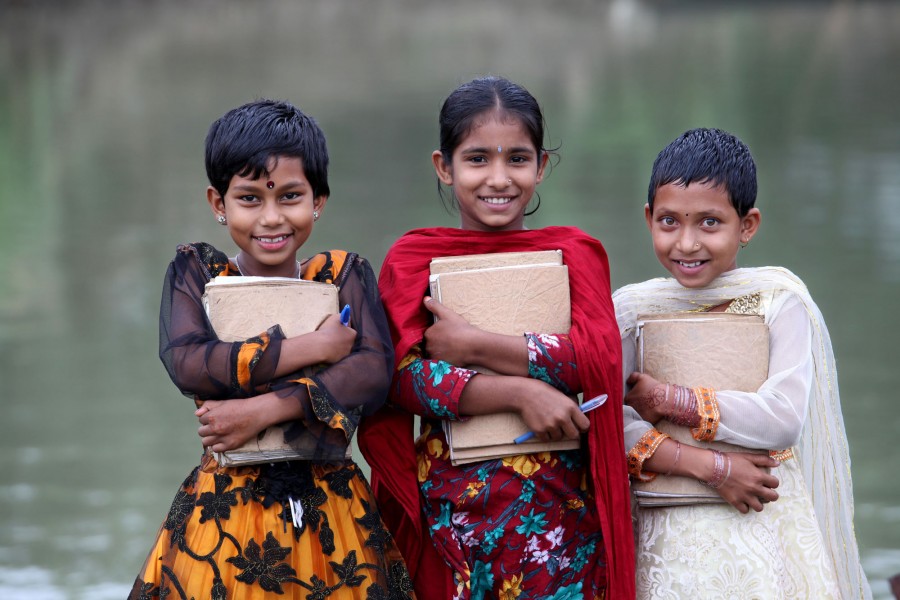Is it time to open schools? To go by the interim Education Watch Report 2020-21 released by the Campaign for Popular Education (CAMPE), schools should now be opened, or at least this is what the majority of students, parents and NGO officials responsible for education programmes are in favour of. An overwhelming majority of 75 percent students, 76 per cent parents, 73 per cent district-level education officers, 80 per cent NGO officials favour opening of schools.
True, both coronavirus infection and death from the disease are reported everyday. Vaccines have just started arriving in the country but it will take months or even years to inoculate the entire population. Can the schools remain closed that long? The idea is that if the community or the population achieves a reasonable level of herd immunity, people can get back to their habitual life. However, the urgency of opening schools no longer allows such a long delay.
The percentage of district-level education officers who have recommended opening educational institutions is almost as high as that of students and teachers. Perhaps an even higher percentage of upazila-level education officials would do so. It is indisputable that villages are mostly immune to coronavirus. Schools could be opened there months back. Is there any report that a village has been ravaged by Covid-19? The handful of villages that had to struggle with the disease had the problem imported there by migrant workers or returnees from cities.
There is no reason to prolong the closure of village schools anymore. The fact that students of village schools are the victims of the digital divide has been glaringly exposed by the survey of the CAMPE. Its findings are disquieting: 69 per cent students of village schools reported that they could not attend TV and online classes because they do not have such electronic gadgets. Then the few who have such devices cannot avail of the opportunity because of lack of regular power supply or slow speed of internet or its frequent interruptions. Again, 16.5 of the students interviewed skipped such classes because those were not interesting to them.
All this points to the fact that the adverse impacts of the digital divide could be overcome if different programmes were taken to meet the need of students of village schools. Students in villages are subjected to disparities of various kinds for understandable reasons. Facilities are not up to the mark, teachers are mostly below quality because the more competent among them choose a teaching profession in cities and towns where their income from coaching classes and tuition is many times more than their salaries. Even their poor parents cannot afford coaching before or after classes.
Extension of school closure --- one after another --- has brought the total time to more than a full academic year. Total isolation from the system ---albeit it is not an ideal one --- will complete the unlearning process for most students, particularly in rural Bangladesh. One year has been lost, there is no reason why this year should not be made good use of to recuperate as much as possible. The auto pass ---notwithstanding the fact there was no better alternative ---will do no good to students.
With all its flaws, the academic environment of schools is psychologically energising. Socialisation with peers and regular attendance of classes do a lot of good that is now terribly missing. It affects tender minds and there is nothing to be surprised if students of the more protective guardians go into bouts of mental depression. Some students in cities have already started attending coaching centres. In villages, students do not have to comply with a rigorous regime and most of them have the freedom to move freely. Their chance of developing psychological depression is less likely but run the risk of getting wild and unlearning whatever they were through.
In a situation like this, village schools can be opened with no further delay. This winter season also is ideal for holding classes in the open. So far physical distancing is concerned, on the school playgrounds in villages, this should not pose a minimum challenge. Yet it would be wise to have an arrangement of adequate sanitation so that teachers in particular can keep them safe from infection. It is them who are likely to catch the disease from asymptomatic students. This is exactly what happened when schools in the United States of America were opened immediately after the first wave of the pandemic. The greatest challenge facing village schools is their toilets and water sources. There is a need for sufficient allocation of money for making such arrangements as hygienic as possible.
After opening village schools, those in the small towns, districts and cities can gradually be opened depending on the availability of vaccines and the behaviour of the virus with the rise of mercury. The winter should not last for more than a month and by that time a clear picture will emerge for the authorities to take a proper decision. Meanwhile village schools can start on a trial basis.


